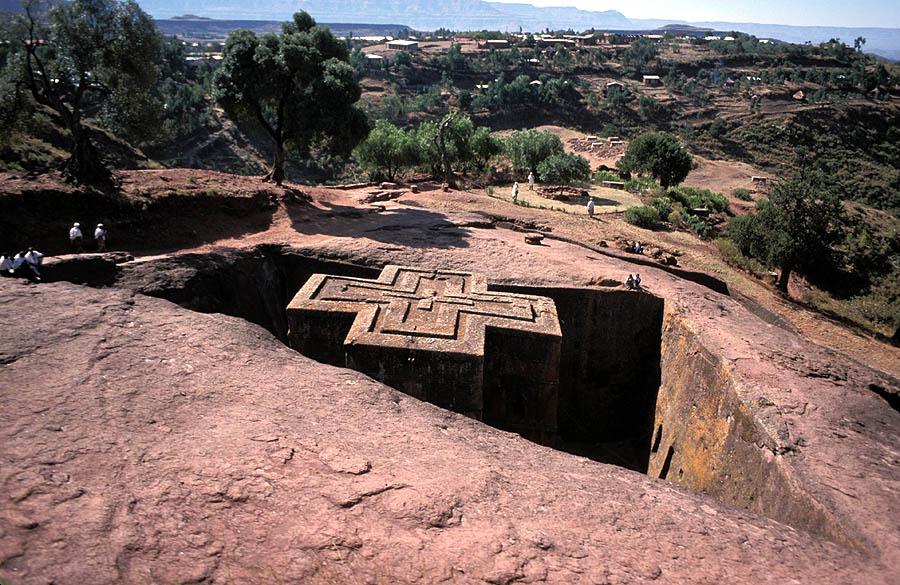The Arrival and Growth of Christianity in Africa
Christianity first arrived in Africa in the 1st century AD, and by the 21st century, a significant majority of Africans identify as Christians. Throughout history, several African Christians played pivotal roles in the early development of Christianity and in shaping its doctrines, including influential figures such as Tertullian, Perpetua, Felicity, Clement of Alexandria, Origen of Alexandria, Cyprian, Athanasius, and Augustine of Hippo.
In the 4th century, the Aksumite Empire, located in modern-day Ethiopia and Eritrea, became one of the first regions in the world to adopt Christianity as its official religion. This was soon followed by the Nubian kingdoms of Nobatia, Makuria, and Alodia, as well as several Christian Berber kingdoms. Today, Africa is home to over 718 million Christians, accounting for approximately a quarter of the world’s Christian population.
While the spread of Christianity in Africa is often attributed to colonialism, its roots on the continent extend much deeper. The Bible recounts the presence of Africans in the early church, with the continent being among the first to receive the Gospel—the foundation of the Christian faith. One notable account involves Philip the Apostle and an Ethiopian eunuch, who served as the treasurer for Queen Candace of Ethiopia, as recorded in Acts 8:26-39. After his encounter with Philip, the Ethiopian eunuch converted to Christianity and likely returned to his hometown, which is thought to be Meroe in present-day Sudan.
Another significant figure is Simon of Cyrene, mentioned in Luke 23:26, who assisted Jesus in carrying his cross. Simon hailed from Cyrene, a Greek city in modern-day Libya, which had a substantial Jewish community due to the forced settlement of approximately 100,000 Jews from Judea during the reign of Macedonian Greek emperor Ptolemy Soter in 323-285 BC. This large Jewish population laid the groundwork for the spread of Christianity in the region.
Clement of Alexandria, Priest and Theologian, c. 210 – The Episcopal Church
Early Christianity in North Africa
The Coptic Orthodox Church of Egypt credits the apostle Mark with the introduction of Christianity in Africa, stating that he evangelized in Alexandria around 60 AD. Alexandria, the second largest city in modern Egypt, became a crucial hub for the development of Christianity on the continent, with Mark serving as its bishop. The establishment of systems, structures, and schools, such as the Catechetical School of Alexandria founded by Clement of Alexandria (Titus Flavius Clemens) towards the end of the 2nd century AD, fostered the growth of Christianity. This school emerged as a major center for theological study and Biblical interpretation.
Alexandria produced many renowned Christian scholars, including those previously mentioned, who are recognized as the Fathers of Western Theology. From Alexandria, Christianity spread to Carthage, located in modern Tunisia. Carthage, the heart of the Roman province in Africa, became a prominent center for early Christianity.
Tertullian, a scholar from Carthage, introduced the term “Trinity,” which describes the Christian doctrine of one God in three distinct persons: God the Father, the Son (Jesus Christ), and the Holy Spirit. Although this doctrine was already widely accepted among Christian theologians, Tertullian was the first known individual to use the Latin term “Trinitas” in writing. He also mentored significant church figures like Bishop Cyprian of Carthage and Bishop Augustine of Hippo.
As North Africa was largely under Roman control, Latin became the primary language for spreading Christianity in the region. Monasticism began in Egypt before transitioning to the Latin-speaking church of Northwest Africa. While the Roman Empire acted as a catalyst for the spread of Christianity, Roman leaders often viewed the religion as a challenge to their authority, leading to persecution. Ironically, this persecution only served to strengthen the faith.
Christianity thrived in North Africa for centuries but experienced a decline in the 7th century with the introduction of Islam from the Arabian Peninsula. Following the death of Prophet Muhammad in 632 AD, Islam was brought to the region by Arab forces, becoming deeply entrenched in society. In 698 AD, the Muslim Umayyad army from Egypt destroyed Carthage, effectively ending Roman and Christian rule in Northwest Africa, though a sizable Christian population remains.
Early Christianity in East Africa
While Christianity flourished in North Africa, it also began to grow in the kingdoms of Nubia (modern Sudan) and Ethiopia. Nubia claims to be one of the oldest Christian nations in the world, alongside Armenia in Europe.
In the 4th century, King Ezana of Aksum (ancient Ethiopia and Eritrea) made Christianity the official religion of his kingdom. He was introduced to the faith by a Syrian missionary named Frumentius. The spread of Christianity in the region was further influenced by other Syrian monastic missionaries, particularly “The Nine Saints,” who inspired significant Christian movements.
Conversely, while Jewish converts helped spread Christianity in Nubia, it did not flourish as much as it did in Ethiopia. Between 1200 and 1500, the Zagwe dynasty of Ethiopia—a lineage of Christian kings—revived Christian art, literature, and church expansion. Emperor Lalibela, recognized as the greatest of the Zagwe rulers, constructed eleven famous stone churches to create a “New Jerusalem.”
In 1270, the Zagwe dynasty was succeeded by the Solomonic dynasty, believed to be established by Menelik I, said to be the son of King Solomon and the Queen of Sheba. This lineage was regarded as the rightful dynasty. The 15th century saw the peak of this dynasty under Zara Yaqob, who convened church councils for theological debates and worked to eliminate indigenous African traditional religions.
Meanwhile, Christianity began to wane in Nubia after indigenous forces were defeated by a Cairo sultan named Babyars I. Following this defeat, Nubia fell under Muslim Egyptian control, and by 1500, Christianity in the region had nearly vanished.

Tertullian, Father of Latin Theology
The Spread to the Rest of Africa
Although Christianity was not introduced to Africa solely by colonial powers, it would be misleading to ignore the significant influence of colonialism and the slave trade on its spread across the continent. European nations took control of various African territories, often using Christianity as a means of subjugation.
From 1420 to 1800, Portuguese politics and Christian missionaries dominated much of Africa’s coastal countries. There was a constant struggle between Portuguese slave traders, seeking to transport Africans as slaves, and missionaries aiming to convert them. However, missionaries were too few to make a lasting impact, resulting in only a limited spread of Catholic Christianity. In regions like modern-day Congo and Angola, the religion took root and conflicted with traditional beliefs.
During the 15th and 16th centuries, trade relations between West Africa and Europeans opened the door to religious influence alongside commercial exchanges. Additionally, the 18th century saw an influx of Christian missionaries from the Western world, whose evangelical efforts were more effective.
The colonization of Africa marked a turning point. Colonizers denigrated indigenous cultures and presented their interpretation of Christianity as the sole valid belief system, despite its oppressive nature.
Eventually, African Christians began to break free from this oppression, reforming the local church and establishing African Independent Churches. Today, Christianity in Africa—particularly Pentecostalism—has evolved independently from European influence.
The narrative of Christianity in Africa is nuanced, shaped by the harmful actions of colonial powers, but it has also brought education, literacy, and development through the work of missionaries. Ultimately, the message of Christianity, which embodies hope, has resonated with many disadvantaged Africans over the years.

Notable Landmark
The Church of Saint George in Lalibela, Ethiopia, is renowned for being rock-hewn in the shape of a cross.
Credit: africarebirth, Wikipedia

